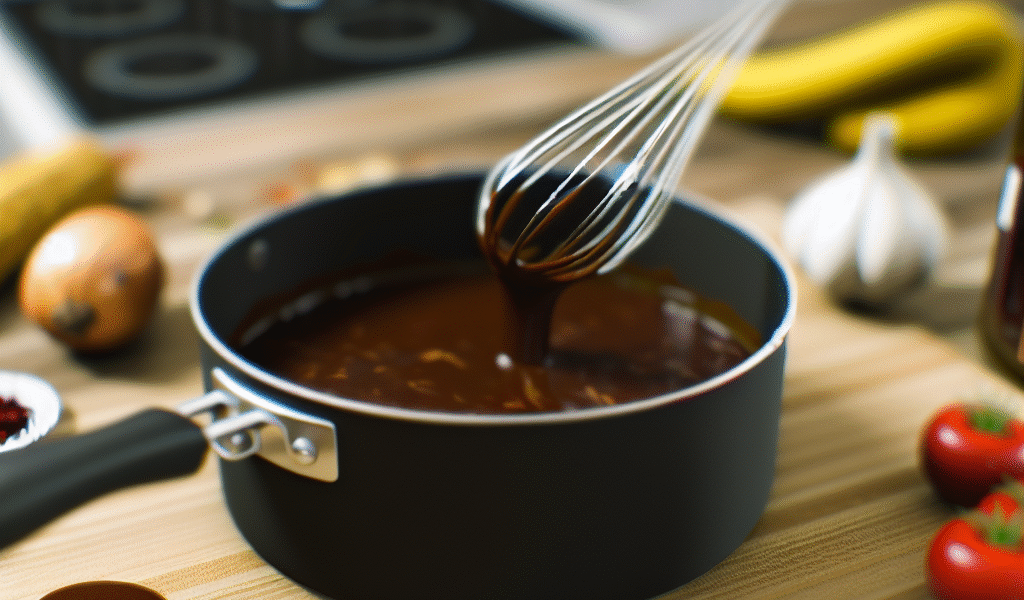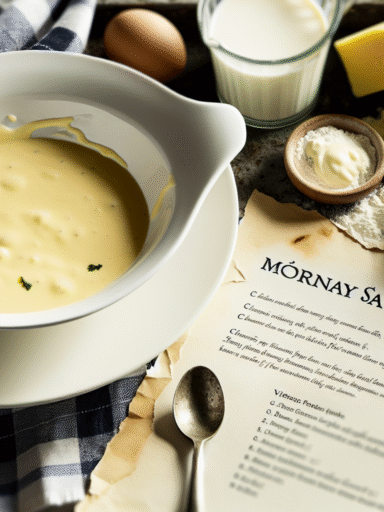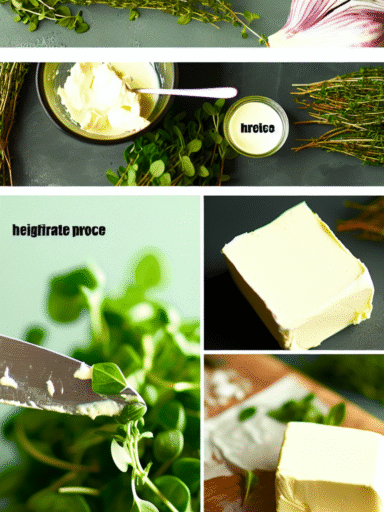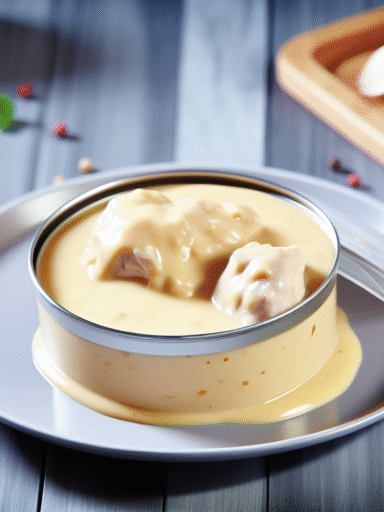Espagnole Sauce
Espagnole, often called the mother of brown sauces, is a deep, rich, and savory brown sauce that forms the foundation for many classic French dishes. If you’ve ever wondered how chefs layer flavors in stews, roasts, or braised dishes, this sauce is your answer. Let’s dive into how to make this sturdy, flavorful base that brings a beautiful depth to your cooking.
Tags / Categories
- Flavor Profile: Rich, savory, umami, slightly smoky
- Main Ingredients: Beef bones, mirepoix, brown roux, tomato paste
- Region: French Classic Cuisine
- Usage: Base sauce, braises, gravies, stews
Quick Info Box
- Prep Time: 20 minutes
- Cook Time: 3 hours 30 minutes
- Total Time: 3 hours 50 minutes
- Difficulty Level: Intermediate
- Yield: Approximately 4 cups
Ingredients List
- 3 lbs beef bones (preferably with marrow and some meat)
- 1 large onion, roughly chopped
- 2 carrots, roughly chopped
- 2 celery stalks, roughly chopped
- 2 tbsp tomato paste
- 3 tbsp butter
- 3 tbsp all-purpose flour
- 5 cups brown stock (beef or veal stock preferred)
- 2 cloves garlic, crushed
- 1 bouquet garni (thyme, bay leaf, parsley stalks tied together)
- Salt and freshly ground black pepper, to taste
Instructions
- Roast the Bones and Vegetables: Preheat your oven to 425°F (220°C). Spread the beef bones on a roasting pan and roast for about 45 minutes until they turn a deep brown but not burnt. Toss in the onion, carrots, and celery halfway through to caramelize them alongside the bones.
- Make the Brown Roux: In a heavy-bottomed pot, melt butter over medium heat. Add the flour and whisk constantly, cooking the roux until it takes on a beautiful nutty brown color — about 8 to 10 minutes. Don’t rush this step; your sauce depends on this deep flavor and color.
- Add Tomato Paste and Mirepoix: Stir in tomato paste to the roux and cook for another 2 minutes. Once the bones and veggies are roasted, transfer them along with any pan drippings into the pot.
- Deglaze and Simmer: Add the garlic and bouquet garni, then pour in the brown stock slowly, stirring to combine with the roux. Bring to a simmer and cook uncovered on low heat for about 3 hours, skimming any foam or fat that rises to the top occasionally.
- Strain and Season: Once reduced and thickened, strain the sauce through a fine-mesh sieve or cheesecloth into a clean pot. Discard solids. Taste and adjust seasoning with salt and pepper. Your Espanole should be thick enough to coat the back of a spoon — don’t stress if it’s a little chunky; you can strain it again if you’d like a silkier finish.
Serving Suggestions
Espagnole sauce is wonderfully versatile. Use it as a hearty base for:
- Braising beef short ribs or lamb shanks — it adds such depth and richness.
- Making classic dishes like Beef Bourguignon or Steak Diane.
- Elegant brown gravy for roast meats or mashed potatoes.
- The foundation for derivative sauces like Demi-glace or Bordelaise.
Origin & History
The name Espagnole literally means “Spanish” in French, but ironically, this deeply French sauce doesn’t come from Spain. It was popularized by Auguste Escoffier, the legendary French chef, in the early 20th century as one of the five mother sauces. This sauce represents centuries of culinary tradition, showcasing the French mastery of building complex flavors from humble ingredients, particularly via roasting and slow simmering.
Variations & Substitutions
Looking to make Espanole your own? Here’s how you can play with the recipe:
- Vegetarian Option: Substitute beef bones with roasted mushrooms and hearty vegetables alongside mushroom broth — it won’t be classic but still super flavorful.
- Extra Herbs: Add fresh rosemary or thyme sprigs to the bouquet garni for a sharper aromatic twist.
- Wine Boost: Splash in a bit of red wine after roasting the bones to deglaze the pan for a richer aroma.
- Thicken or Thin: To adjust consistency, whisk in a bit more roux for thickness or stock for a lighter sauce.
Storage & Make-Ahead Tips
Espagnole sauce can be made ahead and stores beautifully:
- Refrigeration: Cool completely, then store in an airtight container for up to 4 days.
- Freezing: Pour into freezer-safe containers or ice cube trays. Freeze for up to 3 months. Thaw overnight in the fridge for best results.
- Reheat: Warm gently over low heat, stirring often to prevent burning. If thickened, thin with a splash of stock or water.
Nutritional Information
Approximate per 1/2 cup serving:
- Calories: 90 kcal
- Protein: 8g
- Fat: 5g
- Carbohydrates: 4g
- Fiber: 0.5g
Related Sauces / Try Next
- Demi-Glace – a luscious, reduced sauce built from Espagnole.
- Sauce Bordelaise – red wine, shallots, and bone marrow join forces.
- Sauce Chasseur – a hunter’s sauce featuring mushrooms and tomatoes.
FAQ
- Can I use store-bought beef stock instead of making brown stock?
- Absolutely! While homemade brown stock adds depth, a high-quality beef broth works fine for a quicker version. Just remember it may lack some of that roasted flavor complexity.
- How long can I keep Espagnole sauce refrigerated?
- Ideally, consume within 3-4 days. Always store it in a sealed container and reheat carefully to preserve flavor and freshness.
- Can I skip the roux and thicken the sauce another way?
- The roux is traditional and key to that velvety texture, but you can thicken with cornstarch slurry if needed. Just whisk it in gradually and cook until glossy.
Making Espagnole sauce might sound intimidating at first, but with a bit of patience and love, you’ll find it incredibly rewarding. Its rich, velvety body will elevate your dishes and teach you the art of layering flavors. So grab those bones, turn up the heat, and get ready for your kitchen to smell amazing right about now. Your culinary journey into classic French sauces starts here!



